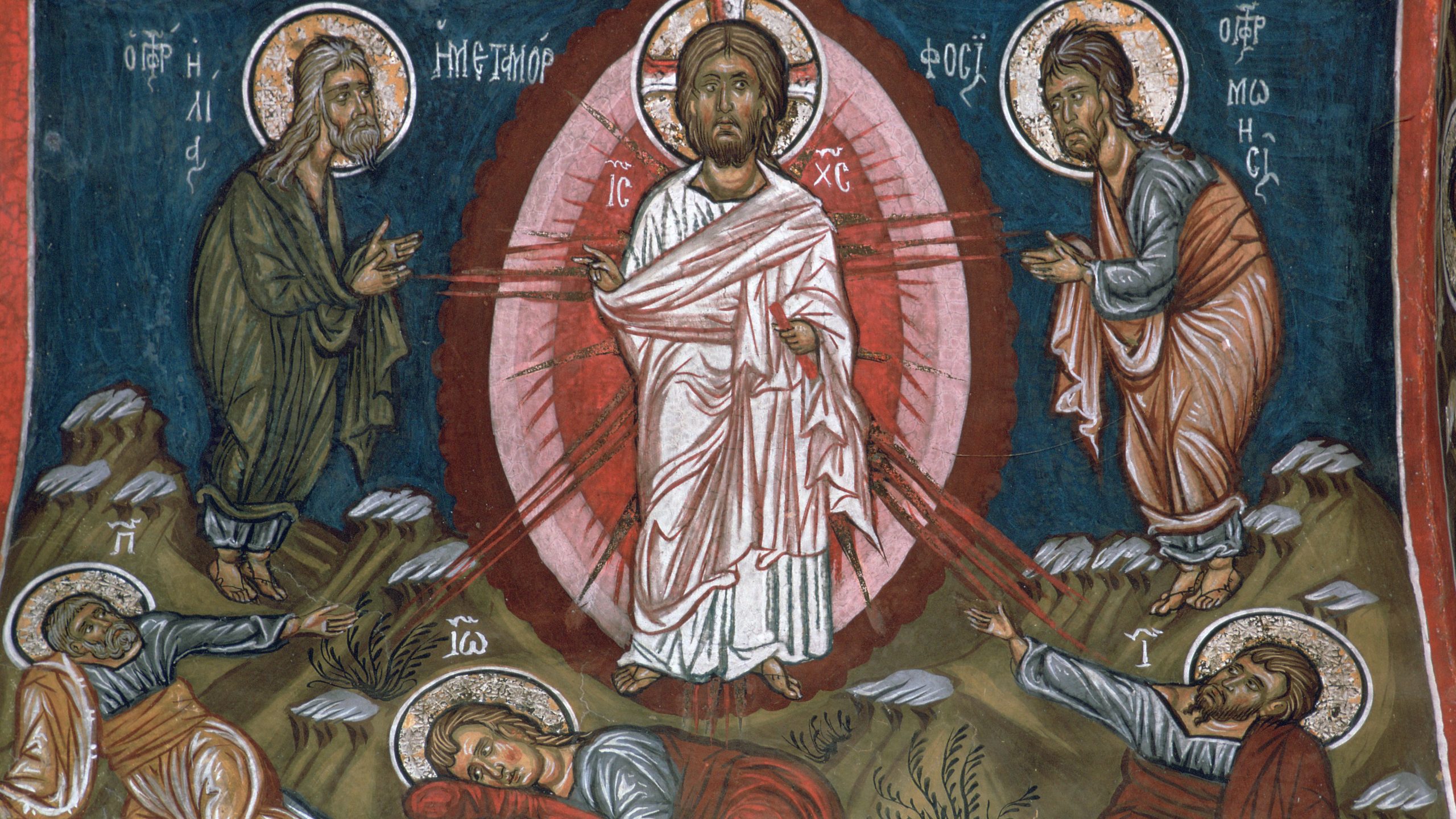Why do we commemorate the experience of the Lord’s Transfiguration? What is revealed in sacred Scripture?
Let’s start with locating the Transfiguration in Scripture –You can find the narrative in the synoptic Gospels Matthew 17:1–8, Mark 9:2–8, Luke 9:28–36.
“Today we celebrate the overwhelming beauty of human nature, restored in Christ as a prelude to the Resurrection.
The gospel event served to strengthen the apostles’ faith before his passion and death. In the ancient Church, this lesson was read during Lent. Some time before the sixth century, a church was dedicated to the Transfiguration on Mt Tabor, and the feast acquired the calendar date we now observe.
The Transfiguration is the clearest epiphany recorded in Scripture. Moses and Elijah, representing the Law and the Prophets, appear with Christ, bearing witness to him as Messiah. The light emanating from Christ in this vision has provided a long line of Church fathers with a theme that has become the unifying thread in Byzantine theology — the vision of God as light.
This tradition is founded on St John, one of Christ’s companions on the mountain. He opens his account of the good news by saying, “The Word was the true light that enlightens all people. He lived among us, and we saw his glory!”
In this light, humanity, along with all creation, enjoys this deifying vision. Furthermore, our happiness will increase along with our ability to see the reality of this manifestation.
It has been the task of monastics of all times to embody the fruits of this vision for the encouragement of all. For in true asceticism, the world is not held in contempt, but seen in the light of its original beauty which in turn calls forth compassion and love.” (NS)
